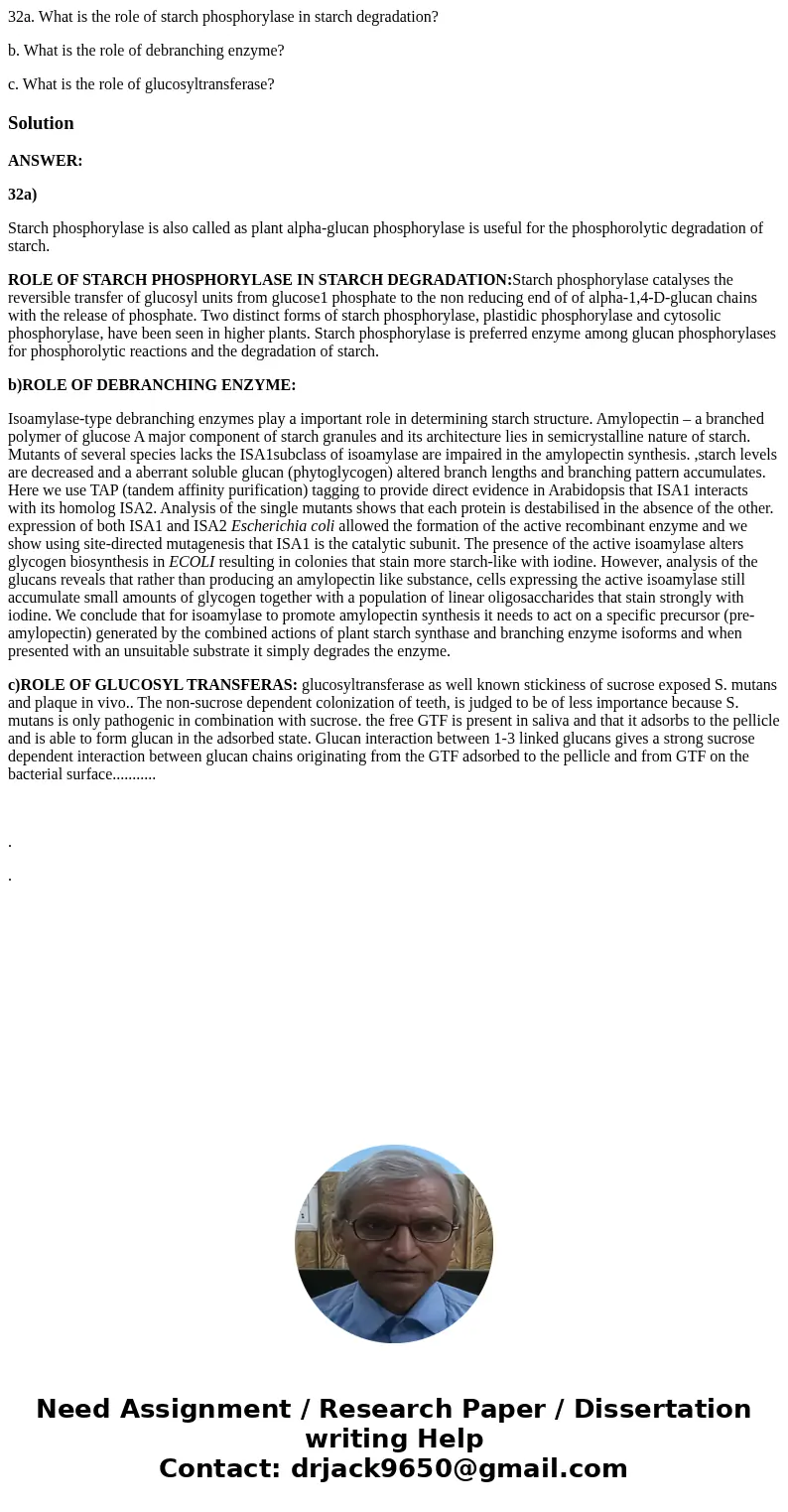32a What is the role of starch phosphorylase in starch degra
32a. What is the role of starch phosphorylase in starch degradation?
b. What is the role of debranching enzyme?
c. What is the role of glucosyltransferase?
Solution
ANSWER:
32a)
Starch phosphorylase is also called as plant alpha-glucan phosphorylase is useful for the phosphorolytic degradation of starch.
ROLE OF STARCH PHOSPHORYLASE IN STARCH DEGRADATION:Starch phosphorylase catalyses the reversible transfer of glucosyl units from glucose1 phosphate to the non reducing end of of alpha-1,4-D-glucan chains with the release of phosphate. Two distinct forms of starch phosphorylase, plastidic phosphorylase and cytosolic phosphorylase, have been seen in higher plants. Starch phosphorylase is preferred enzyme among glucan phosphorylases for phosphorolytic reactions and the degradation of starch.
b)ROLE OF DEBRANCHING ENZYME:
Isoamylase-type debranching enzymes play a important role in determining starch structure. Amylopectin – a branched polymer of glucose A major component of starch granules and its architecture lies in semicrystalline nature of starch. Mutants of several species lacks the ISA1subclass of isoamylase are impaired in the amylopectin synthesis. ,starch levels are decreased and a aberrant soluble glucan (phytoglycogen) altered branch lengths and branching pattern accumulates. Here we use TAP (tandem affinity purification) tagging to provide direct evidence in Arabidopsis that ISA1 interacts with its homolog ISA2. Analysis of the single mutants shows that each protein is destabilised in the absence of the other. expression of both ISA1 and ISA2 Escherichia coli allowed the formation of the active recombinant enzyme and we show using site-directed mutagenesis that ISA1 is the catalytic subunit. The presence of the active isoamylase alters glycogen biosynthesis in ECOLI resulting in colonies that stain more starch-like with iodine. However, analysis of the glucans reveals that rather than producing an amylopectin like substance, cells expressing the active isoamylase still accumulate small amounts of glycogen together with a population of linear oligosaccharides that stain strongly with iodine. We conclude that for isoamylase to promote amylopectin synthesis it needs to act on a specific precursor (pre-amylopectin) generated by the combined actions of plant starch synthase and branching enzyme isoforms and when presented with an unsuitable substrate it simply degrades the enzyme.
c)ROLE OF GLUCOSYL TRANSFERAS: glucosyltransferase as well known stickiness of sucrose exposed S. mutans and plaque in vivo.. The non-sucrose dependent colonization of teeth, is judged to be of less importance because S. mutans is only pathogenic in combination with sucrose. the free GTF is present in saliva and that it adsorbs to the pellicle and is able to form glucan in the adsorbed state. Glucan interaction between 1-3 linked glucans gives a strong sucrose dependent interaction between glucan chains originating from the GTF adsorbed to the pellicle and from GTF on the bacterial surface...........
.
.

 Homework Sourse
Homework Sourse